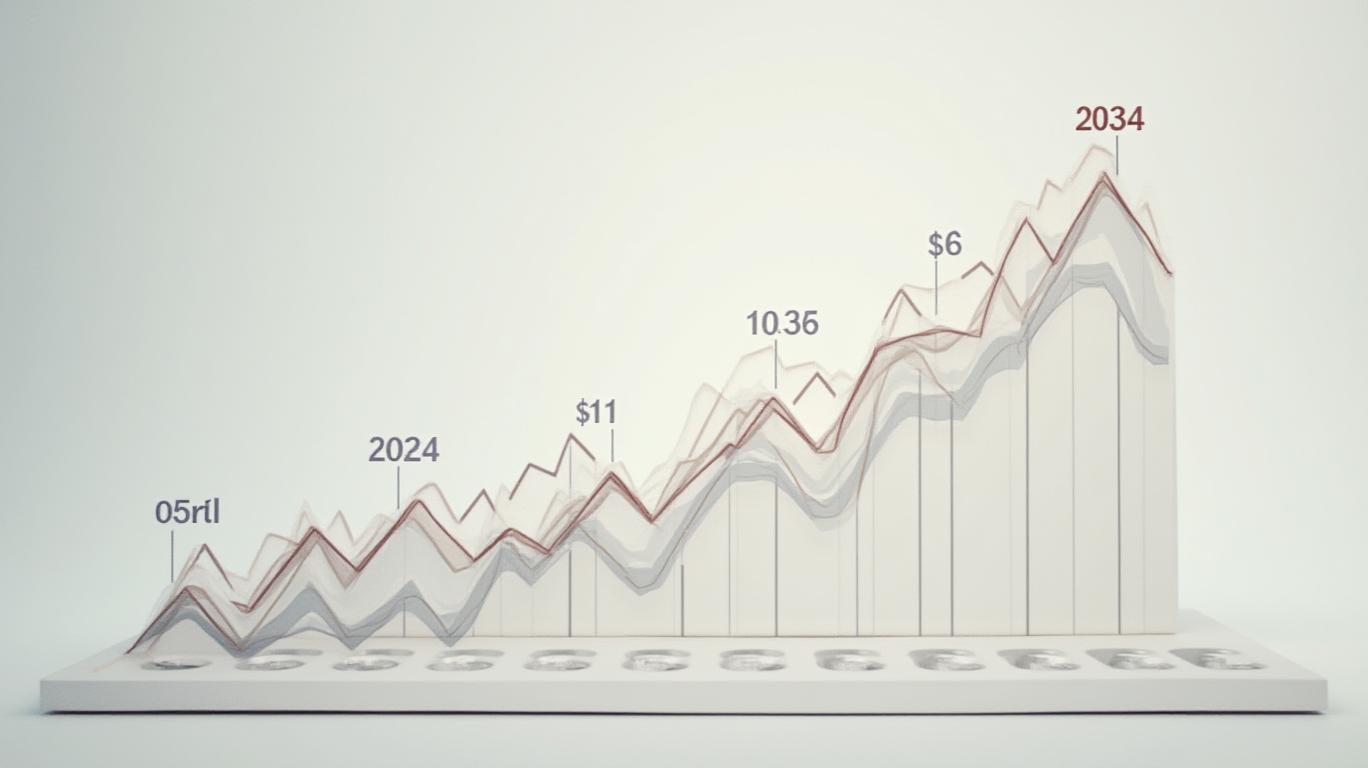Structural Cracks in U.S. Credit: Navigating the Downgrade with Defensive Fortunes
The U.S. credit rating's historic downgrade to non-AAA status across all major agencies marks a seismic shift in global markets. With federal debt projected to hit $36 trillion in 2024 and a debt-to-GDP ratio soaring to 134% by 2035, the era of fiscal complacency is over. For investors, this is not merely a ratings event—it's a clarion call to restructure portfolios around resilience. Below, we dissect the structural risks and map the sectors poised to thrive in this new economic reality.
The Structural Risks: A Fiscal Time Bomb

The
downgrade to Aa1 underscores a stark truth: the U.S. economy is now constrained by its own debt. Key vulnerabilities include:1. Interest Costs: Federal interest payments will consume 30% of revenue by 2035, crowding out spending on infrastructure, healthcare, and defense.
2. Deficit Spiral: Persistent deficits (9% of GDP by 2035) and stagnant tax receipts will fuel inflationary pressures.
3. Political Gridlock: Without bipartisan fiscal reforms, the Fed's hands are tied—rates may remain elevated longer to combat inflation, stifling growth.
This trifecta of risks creates a “stagflationary trap”: slower growth, higher borrowing costs, and eroded purchasing power. Investors ignoring these dynamics risk severe portfolio erosion.
Immediate Market Impact: A Masked Crisis
While Treasury yields dipped post-downgrade—10-year rates stabilized at 4.56%—this is a false calm. The downgrade's true impact will unfold over years, not days.
- Borrowing Costs: The 30-year mortgage rate is already at 6.92%, with further hikes likely as interest payments eat into budgets.
- Fed Constraints: With debt servicing costs consuming 30% of revenue, the Fed cannot afford to cut rates aggressively, even during a slowdown.
The takeaway? Duration risk is dead. Long-term bonds are no longer safe havens.
Resilient Sectors: Building a Fortress Portfolio
1. Utilities: The Bedrock of Stability
Utilities are the ultimate defensive play, offering low volatility and regulatory certainty. With P/E ratios at 13x (below their 14x historical average), they're undervalued yet insulated from trade wars and inflation.
Actionable Idea: Overweight regulated utilities like NextEra Energy (NEE) and Dominion Energy (D), which benefit from clean energy mandates and inflation-adjusted rate hikes.
2. Healthcare Providers: A Discounted Lifeline
Healthcare providers trade at 13x forward earnings, a 7% discount to their historical average. Unlike drugmakers exposed to price controls, providers profit from rising demand for care in an aging population.
Why Now?
- Medicare/Medicaid spending will grow as deficits force cost-shifting to public programs.
- The sector's defensive nature aligns with stagflation's “safety first” mantra.
Portfolio Move: Target managed-care giants like UnitedHealth (UNH) and primary care networks such as HCA Healthcare (HCA).
3. Infrastructure: The AI-Driven Growth Engine
The BlackRock report highlights infrastructure as a low-correlation asset class, with AI datacenters and renewable projects offering stable cash flows. Public infrastructure ETFs (e.g., XINF) provide liquidity and diversification.
Why It Works:
- AI's $315B capex boom (led by Amazon, Microsoft) fuels demand for data hubs.
- Governments are pouring capital into projects to offset private-sector stagnation.
4. Gold: The Ultimate Fiscal Hedge
With U.S. deficits widening and central banks adding to gold reserves (China alone bought 1,000+ tons in 2024), the yellow metal is a must-have inflation and currency hedge.
Trade: Add a 5–10% allocation to gold ETFs like GLD or physical bullion.
Global Diversification: Beyond the U.S. Fiscal Abyss
Latin America: The Undervalued Trade Hub
Post-tariff, Latin America is a strategic beneficiary of supply chain reconfiguration. Brazil's P/E is 13% below its 5-year average, while Mexico's undervalued manufacturing sector positions it as a U.S. trade substitute.
Play: Target Brazil's Itaú Unibanco (ITUB) for financials or Chile's SQM for lithium exposure.
Developed Markets (Ex-U.S.): Value in Europe and Japan**
- Europe: Germany's €500B reflation plan boosts infrastructure stocks like Siemens (SIE).
- Japan: A weaker yen and corporate governance reforms favor exporters like Toyota (TM).
The Inflation Playbook: TIPS and Short-Term Bonds
- Inflation-Linked Bonds (TIPS): Use front-end (0–5y) TIPS to hedge against rising breakevens.
- Short-Term Bonds: 3–7y corporates (e.g., Microsoft's 2030 notes at 5.25%) offer yield without duration risk.
Final Call to Action
The U.S. credit downgrade is not a distant threat—it's a present-day reality reshaping asset prices. Investors must pivot to:
1. Low Volatility Equity (utilities, healthcare).
2. Infrastructure and Gold to hedge inflation.
3. Global Value in Latin America and Europe.
The fiscal clock is ticking. Build your fortress portfolio now, or risk being buried by the debris of U.S. debt.
JR Research's analysis synthesizes macro risks with actionable sector plays. Follow for real-time updates on global market shifts.

Comments
No comments yet